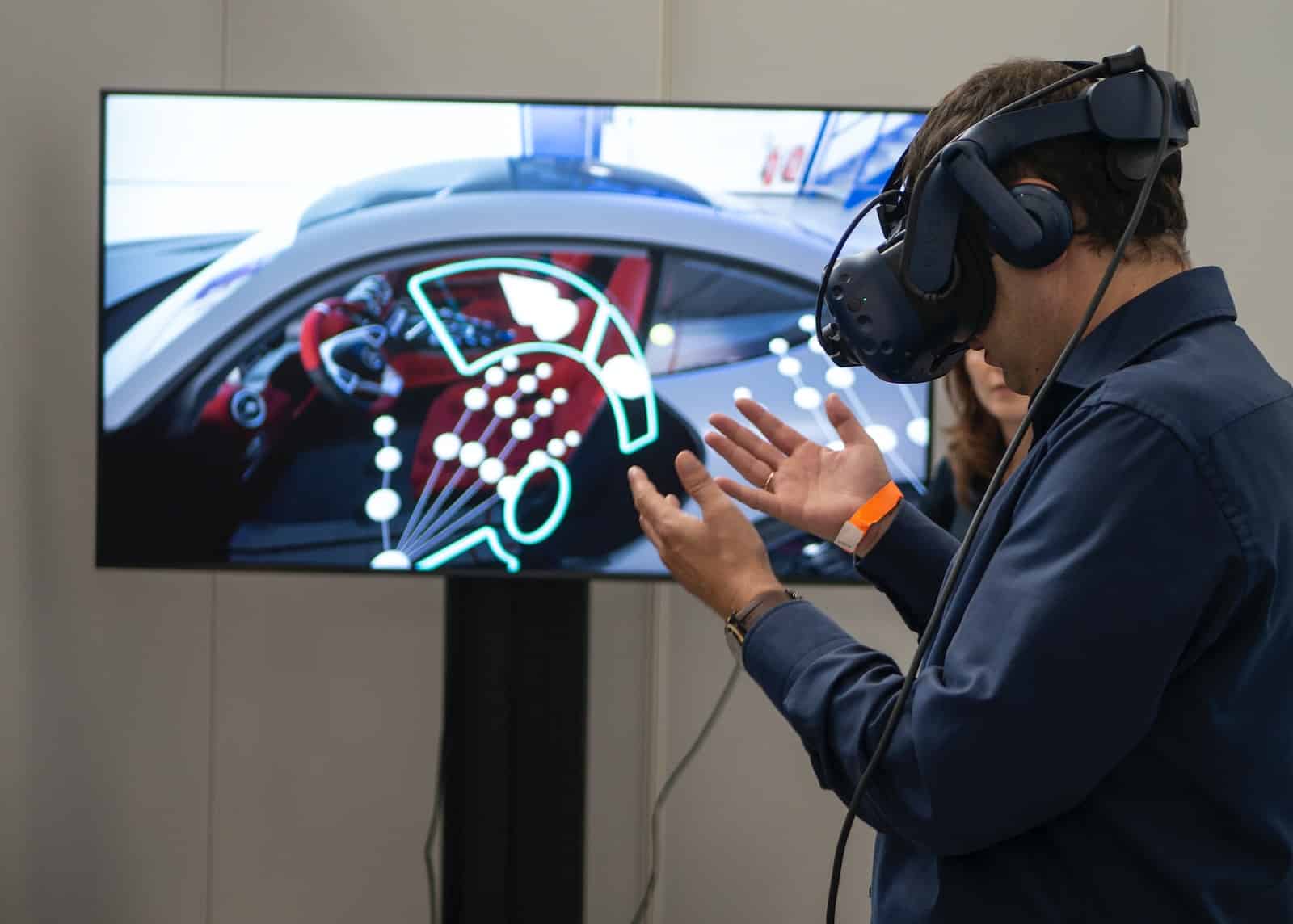The future of augmented reality

From interactive gaming experiences to immersive virtual business meetings, augmented reality (AR) is rapidly transforming the way we interact with the digital world. No longer confined to the realms of science fiction, augmented reality technology is set to become an integral part of our daily lives, seamlessly blending the real and the digital to create unparalleled experiences.
The Rise of Augmented Reality
The advent of augmented reality can be traced back to the last decade, when early pioneers began experimenting with this innovative technology. Today, the convergence of augmented reality and other cutting-edge technologies promises to create a future where digital experiences are not just confined to screens but integrated into our real world environment.
A lire également : Maximise the impact of your brand with chatbots on social networks
Augmented reality applications have seen a rapid rise in various industries, reshaping the way we operate. From gaming and entertainment to retail and healthcare, there is virtually no sector that has not been touched by this revolutionary technology.
The Role of AR in the Gaming Industry
The gaming industry was one of the first to embrace augmented reality, creating immersive and interactive experiences that have changed the face of gaming forever. Real-world environments are overlaid with virtual elements, providing gamers with a unique experience that blurs the boundaries between reality and fantasy.
A voir aussi : Instructions to an AI based chatbot: how to get the best result?
Imagine donning a pair of glasses which transform your surroundings into a battlefield, a mythical land, or a sports arena. This is not a distant reality, but a present phenomenon. Games such as Pokémon Go and Ingress have already shown the allure of AR in the gaming world.
The Metaverse and Augmented Reality
The concept of the metaverse has gained immense popularity in recent years. This virtual universe, where users can interact in a three-dimensional, digital space, is believed to be the next frontier in the Internet’s evolution. Augmented reality plays a crucial role in the development of the metaverse, enhancing the user experience by providing a seamless integration of the real and the virtual.
Imagine attending a virtual concert, where the performer, stage, and audience all exist within this digital realm. With AR glasses, you could see the concert taking place in your living room, giving you a thrilling and immersive experience.
Augmented Reality in Business Applications
Augmented reality is not just about creating fun and interactive experiences; it also holds significant potential for business applications. AR can help businesses improve productivity, enhance customer experiences, and drive innovation.
For instance, AR can be used to create immersive product demonstrations or virtual showrooms, allowing customers to experience products without leaving their homes. In the realm of remote work, AR could facilitate virtual meetings where participants feel as if they are in the same room.
The Future of AR and WebAR
The future of augmented reality seems promising, with technological advancements and increasing acceptance among consumers. One of the key trends shaping the future of AR is WebAR, a browser-based augmented reality experience that does not require the user to download any apps.
WebAR is heralded as a game-changer as it allows businesses to deliver AR experiences directly through a web browser, making it more accessible to a wide range of users. The possibilities are endless, from interactive advertising campaigns to virtual tours and immersive educational experiences.
The Social Impact of Augmented Reality
Beyond entertainment and business, augmented reality also has the potential to create a profound social impact. It can revolutionize the way we learn, communicate, and interact with the world around us.
In education, AR can bring lessons to life, making learning more engaging and interactive. For example, students could explore the solar system or walk through ancient civilizations right from their classrooms. In healthcare, AR can assist doctors in complex surgeries or help patients understand their medical conditions better.
As we move into the future, the challenge will be to harness the potential of augmented reality responsibly, ensuring it enhances our lives and experiences without compromising our privacy or security. Without a doubt, augmented reality is poised to be a cornerstone of our digital future, forever changing the way we perceive and interact with the world around us.
Augmented Reality and Autonomous Vehicles
Entering the realm of transportation, augmented reality is set to play a crucial role in the evolution of autonomous vehicles. By overlaying real-time data onto the driver’s view, AR can provide important information about road conditions, traffic, and potential hazards. This could significantly enhance safety and efficiency in this emerging sector.
Imagine looking through the windshield of your car and seeing virtual arrows guiding you to your destination, or visual alerts warning you of a pedestrian crossing ahead. This could be possible with the integration of AR in autonomous vehicles. Major players in the automotive industry are already exploring these applications of AR, recognizing its potential to transform the driving experience.
Beyond safety and convenience, AR could also contribute to making autonomous vehicles more environmentally friendly. By optimizing routes and reducing traffic congestion, AR could help reduce fuel consumption and emissions. This application of augmented reality technology reflects a broader trend towards sustainable and smart cities, reinforcing AR’s potential to contribute positively to our society.
Augmented Reality and Artificial Intelligence
The intersection of augmented reality and artificial intelligence (AI) opens up new frontiers in technology. These two cutting-edge technologies can complement each other to create highly sophisticated and immersive experiences.
Artificial intelligence can analyze and interpret data in real-time, enabling AR systems to adapt and respond to the user’s environment. For instance, AI could recognize objects or people in the user’s view and provide relevant information or options for interaction. This could create a truly interactive and personalized AR experience.
On the other hand, AR can enhance AI systems by providing a more intuitive and engaging interface. For example, instead of interacting with AI through voice commands or text, users could use AR to visualize and manipulate AI outputs in a three-dimensional space. This fusion of AI and AR is already being explored in fields such as game development and healthcare, and its potential is only just beginning to be tapped.
Conclusion: Ethical Considerations and the Future of Augmented Reality
As we look towards the future of augmented reality, it’s imperative to consider the ethical implications of this transformative technology. Issues related to privacy, consent, and the digital divide should be addressed proactively to ensure that AR can be harnessed responsibly and inclusively.
Privacy is a major concern, as AR devices often require access to sensitive data, such as location and biometric information. It’s important to establish robust safeguards to protect user data and to provide clear information about how this data is used.
Similarly, consent is essential in the AR realm. Users should have control over their AR experiences, including the ability to opt-in or out of certain features. This is particularly critical when AR is used in public spaces, where individuals who have not chosen to engage with AR could still be affected by it.
Finally, as AR technology becomes more widespread, it’s crucial to address the digital divide to ensure that all individuals, regardless of their socioeconomic status, have access to this technology. This could involve initiatives such as affordable AR devices, subsidized internet access, and digital literacy programs.
In conclusion, augmented reality holds immense potential to reshape our world, enhancing our experiences and interactions with the digital realm. It’s an exciting time for AR, and we eagerly await the transformative changes it will bring to our lives. As we embrace this digital future, let’s also remember to navigate it responsibly, inclusively, and ethically.
